Manual Therapy
Manual Therapy is the elimination of dysfunctions, especially in the musculoskeletal and joint systems, with the help of hands. It is very important that the doctor who will perform the treatment here has received training on this subject, in order to eliminate the undesirable situations that may arise in manual therapy, as in any treatment.
IN WHICH DISEASES MANUAL THERAPY IS BENEFICIAL?
It is used with success especially in the treatment of neck, back and waist pain but also in the treatment of painful diseases in the arm, shoulder, musculoskeletal system. Since the nerves compressed by the muscles and/or joints can be released with Manual Therapy, disorders such as migraine, headache, asthma, digestive disorders, and arthritis can be treated depending on the segments with manual therapy.
HOW IS MANUAL THERAPY APPLIED?
After a detailed disease history is taken, the patient undergoes a complete functional and structural examination to evaluate the patient's posture disorders, functional abilities of the joints in the skeletal system, and movement limitations. Here, the condition of each segment (section) of the spine, the sacroiliac joint (sacrum, that is, the part between the coccyx and the lumbar spine, and the joint between the pelvis and the ilium) and muscle groups is of particular importance.
After these, a treatment plan is created together with the necessary x-ray films and other analyzes and the necessary treatment is performed.
EXPECTED GOALS IN TREATMENT WITH MANUAL THERAPY
1. To eliminate posture disorders,
2.Rotation and manipulation of the neck region
3.Atlanto occipital joint (C0-C1) examination and mobilization
4. Mobilization for the Cervical and Thoracic transition zone
5. Palpation examination of the thoracic region
6. Mobilization and manipulation of the thoracic region
7. To relieve the discomfort caused by the limitation of movement in the wrists-ankles, knee, hip joints.
8. To correct deteriorated functions in spine, hip and sacroiliac joints.
9. Eliminating nerve compressions that cause pain and dysfunction
10. Traction, mobilization, and manipulation of the sacroiliac and hip joints
11. Spring test for sacroiliac joint: SIE arch is investigated from both sides with vertical force on the knee and femur, with the hip flexed to 90 degrees
12. Soft tissue technique for the lumbar region: traction and mobilization of the back extensor muscles and lumbar joints

